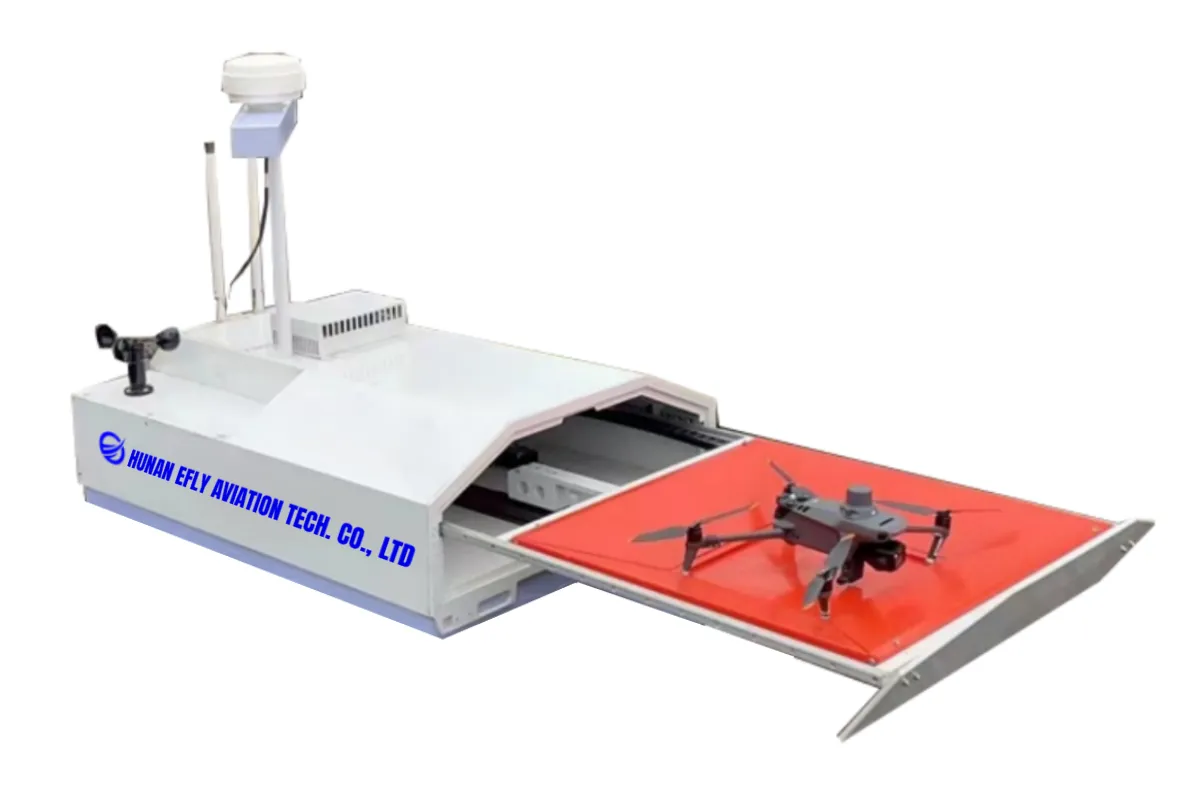Drone-based power inspection
Equipped with infrared thermal imaging, LiDAR, and HD cameras, our drones inspection detect risks like broken conductors, damaged insulators, and tower tilting. AI algorithms automate analysis of temperature anomalies, vegetation encroachment, and corrosion levels, ensuring proactive maintenance.
Description
EFLY focus on drone inspection and especial power grid inspection, such as inspection of transmission lines, transformers, substation. As China’s pioneer in drone-based power utilities inspection & monitoring, EFLY developed the first tower-mounted drone hub for Ultra-High Voltage (UHV) grids inspection.
Our AI-driven drone data platform integrates deeply with power systems, enabling smart inspection, high-precision diagnostics, and full lifecycle management. This creates an “air-ground-space” collaborative ecosystem that drives the digital, intelligent, and unmanned transformation of the power industry.

At the core of our solution is the solar-powered drawer-type drone hub, developed in-house and deployed on transmission towers across thousands of kilometers. These hubs support fully autonomous takeoff, landing, recharging, and mission scheduling—without human presence on-site.
With over 600,000 inspection flight hours logged, these hubs have demonstrated unmatched reliability in extreme weather, remote mountain regions, and high-voltage environments. The system supports major commercial drone models (e.g., DJI, Autel, GUD) and can be customized for client-specific payloads.

Core Advantages of power facilities insepction
High Efficiency
Automated flight routes and AI image recognition greatly improve inspection speed.
Safety
Reduces human risk by replacing manual inspection in high-voltage environments.
Accuracy
Detects faults such as broken strands, damaged insulators, or overheating with precision.
Data-Driven
Real-time data uploads enable intelligent analysis and full lifecycle management.
Application Scenarios
- Drone inspection high-voltage transmission lines – Inspection targets: towers, conductors, overhead lines
- Drone inspection low-voltage distribution lines – Inspection targets: utility poles, connectors, distribution lines
- Integrated UV imaging for corona discharge detection, drone combined with AI algorithms for automatic defect identification
- Substation equipment drone monitoring
- Power plant UAV inspection
- Cable corridor environmental drone monitoring
- Energy storage station safety UAV inspection
Key Components
| Component | Description |
|---|---|
| Solar-Powered Drawer-Type Drone Hub | Powered by solar energy with built-in storage, the hub supports fast installation and versatile deployment. It enables full automation—charging, environmental monitoring, and real-time data transmission, etc. —within a 5 km inspection radius. |
| Drone | Supports DJI, Autel, and other mainstream drones with minor hardware tweaks for full automation and data integration. |
| Multi-Sensor System | Thermal imaging, LiDAR, HD cameras, multispectral sensors. |
| Flight Control System | Autonomous navigation, obstacle avoidance, precise pathing. |
| AI Recognition | Automatic defect detection, vegetation and corrosion analysis. |
| Data Management Platform | Cloud-based analysis, reporting, and maintenance tracking |
FAQ
Drone power line inspections typically follow 1-4 year cycles, depending on voltage levels and local regulations (e.g., FAA Part 107 in the US). Best practices include:
High-voltage lines: Annual drone inspections (AI thermal imaging recommended)
Medium-voltage: 2-3 year intervals (LiDAR+visual combo)
Post-disaster: Immediate UAV deployment (storm/wildfire response)
Depending on factors like: Area size (transmission lines, substations),Data type (thermal, LiDAR, HD video),Routine inspections often cost daily rates range from $1,000 to $10,000+, scaling with project scope, with bulk discounts for long-term contracts.
Drones now handle 80%+ routine inspections (100km lines in 2hrs vs 5 days manually). However, niche cases still need humans:
Complex repairs (e.g., insulator replacement)
Confined spaces (substations)
Regulatory audits (FAA/NERC require human verification)
Future outlook: AI + drone swarms may achieve 95% replacement by 2030.
Oltage isn’t just a number—it dictates drone hardware, sensors, and flight strategies. A tiered drone fleet ensures optimal inspections across all grid assets.
Contact Us
Discover how power inspection by drone can transform your maintenance operations.
- WhatsApp:+86 138-0731-3486
- Email: droneinspectioncn@gmail.com
- Website: www.droneinspectioncn.com
We will contact you as soon as possible!
